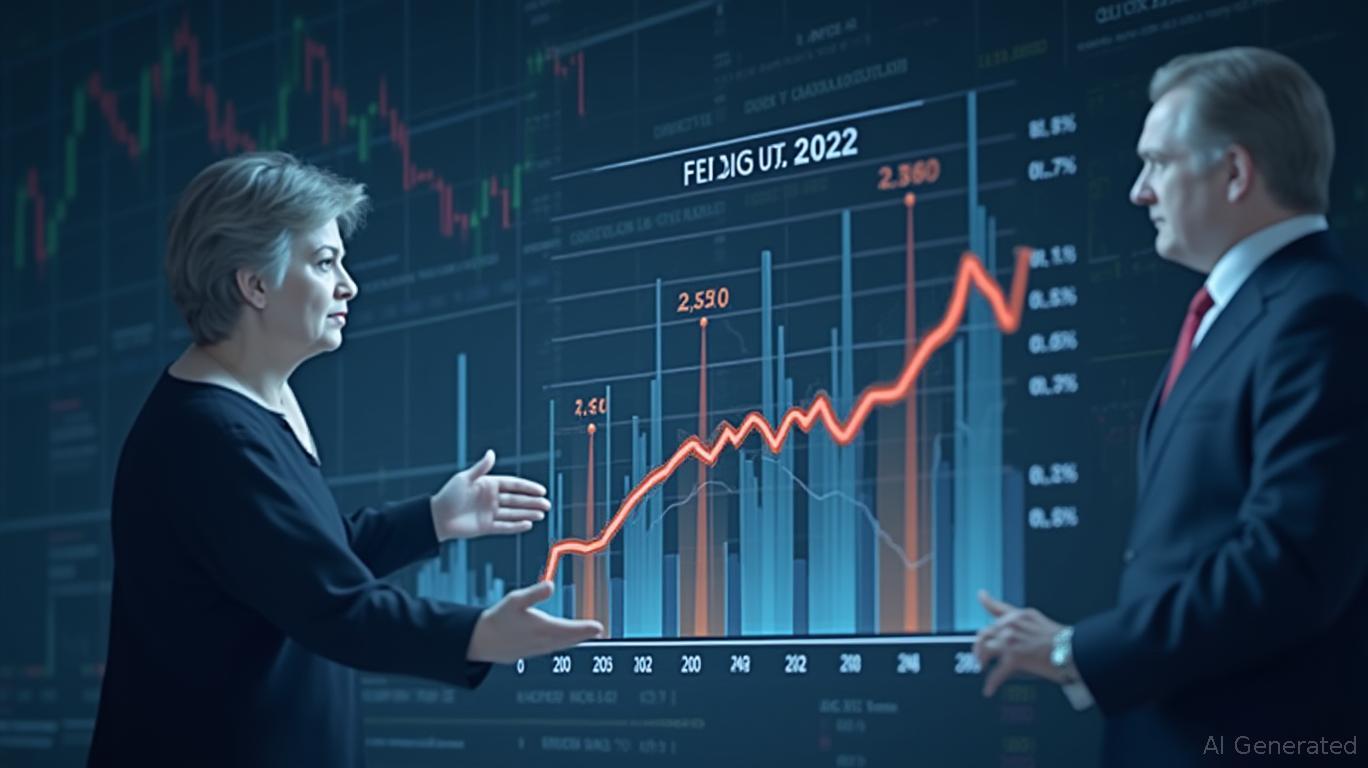Fed's Data-Driven Rate Cut Outlook: Navigating Opportunities and Risks in Equity and Fixed Income Markets
The Federal Reserve's cautious approach to monetary policy, epitomized by Philadelphia Fed President Patrick Harker's remarks, has set the stage for a pivotal year in financial markets. As the Fed balances the potential for 2024 rate cuts with prolonged inflation challenges in 2025, investors must recalibrate strategies to capitalize on rate-sensitive sectors while mitigating risks tied to persistent price pressures.
The 2024 Rate Cut Window: A Catalyst for Equity Rotation
Harker's 2024 stance—highlighting a “data-dependent” path with a base case of one rate cut by year-end—signaled a pivot toward easing monetary policy. Markets responded swiftly, pricing in cuts as early as September 2024 amid declining inflation expectations. This created opportunities in sectors like real estate, utilities, and consumer staples, which thrive in lower-rate environments.

The real estate sector, for instance, saw significant gains as lower rates reduced borrowing costs. REITs (Real Estate Investment Trusts) like Vanguard Real Estate ETF (VNQ) outperformed broader indices, benefiting from reduced mortgage rates. Meanwhile, utilities, which often act as bond proxies, gained traction as investors sought stable yields in a low-rate environment.
The 2025 Crossroads: Inflation Risks and Their Impact on Fixed Income
Harker's 2025 comments, however, underscored a stark reality: inflation's slow retreat and policy uncertainties could prolong the Fed's restrictive stance. Tariffs, labor market resilience, and uneven disinflation in sectors like housing and services suggest the Fed may delay further easing until 2026. This creates headwinds for fixed income investors, particularly in long-duration bonds.
The 10-year Treasury yield, which had dipped below 3.5% in early 2024, faced upward pressure as inflation expectations edged higher. Investors in iShares 7-10 Year Treasury Bond ETF (ITE) saw erosion in bond prices due to fears of a delayed “soft landing.”
Sector-Specific Strategies for 2024 and Beyond
- Equities: Rotate to Rate-Sensitive Plays
- Utilities and REITs: These sectors remain defensive bets in a low-rate environment.
- Consumer Staples: Companies like Procter & Gamble (PG) and Coca-Cola (KO), with stable cash flows, offer insulation from economic volatility.
Tech Dividends: Firms with strong balance sheets, such as Microsoft (MSFT) and Apple (AAPL), could outperform as rate cuts reduce discounting pressures on future earnings.
Fixed Income: Shorten Duration, Prioritize Quality
- Short-Term Bonds: SPDR Portfolio Short-Term Treasury ETF (SHV) offers safety amid yield curve uncertainty.
- Inflation-Linked Bonds: iShares TIPS Bond ETF (TIP) can hedge against persistent inflation, though gains may be muted if disinflation materializes.
- High-Yield Bonds: Proceed cautiously; while spreads have narrowed, defaults could rise if the Fed's caution prolongs economic softness.
Key Risks and Harker's Cautionary Notes
Harker's emphasis on “external noises” and policy uncertainty—such as trade disputes or fiscal shifts—adds a layer of unpredictability. Investors should:
- Monitor inflation data, particularly core services prices and wage growth.
- Track Fed communication: A shift from “data-dependent” to “data-responsive” could signal a faster pivot to cuts.
- Avoid overexposure to cyclical sectors (e.g., industrials, energy) if inflation remains sticky.
Conclusion: A Delicate Balance
The Fed's dual mandates of price stability and maximum employment will continue to shape market dynamics. In 2024, rate cuts present a tailwind for equities, but 2025's inflation risks demand prudence in fixed income. Investors who blend rate-sensitive equity plays with short-duration bonds stand to navigate this landscape effectively. As Harker's tenure at the Fed concludes, his legacy of caution serves as a reminder: in an uncertain world, flexibility and data-driven decisions are paramount.

Comments
No comments yet